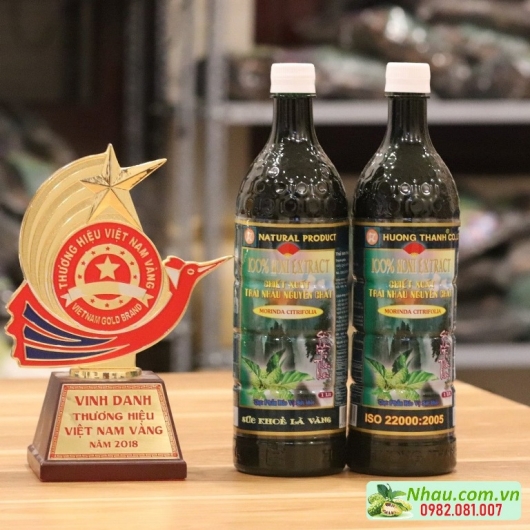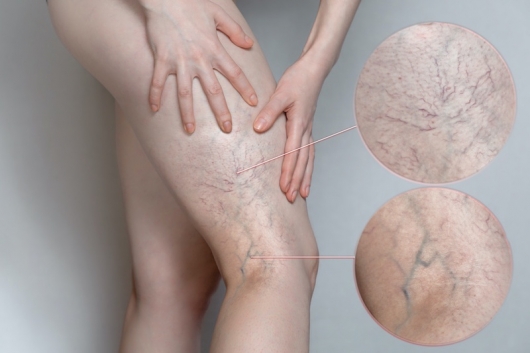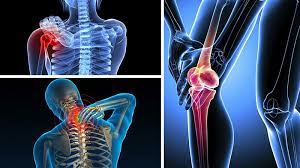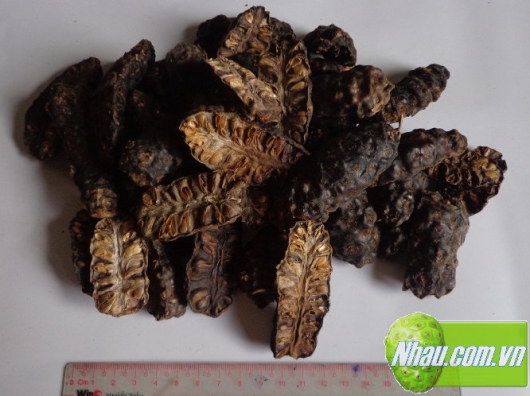Good Health and Well Being are the two most powerful motivating factors for any type of human activity and from time immemorial, men of science have been working at discovering the easiest and most convenient method and way of achieving it, so that human beings can enjoy the Life given to them by God and when illness strikes, recover from it fast and sure.
This has been at the centre of the Philosophy of the various Diets, Nutritional Supplements and Medicines that we have come to accept as Healthy and Contributory. The fruit of the botanical plant Morinda citrifolia, belonging to the family of plants known as Rubiaceae is one such that more than suffices the requirements of a Nutritional Supplement of great advantage. Though in the ancient cultures this fruit was widely used for its health restorative properties, over the years us popularity diminished due to the unpleasant smell that eminates from the ripened fruit and so humanity lost for a while the amazing gift of Health and Well Being that Nature had endowed it with in the form of Morinda citrifolia.
It is to Dr. Ralph Heinicke of the Pineapple Research Institute in the United States of America, who first isolated a crystalline material from this fruit Morinda citrifolia that is responsible for the synthesis of Xeronine, which plays the sterling role of helping the Human body properly assimilate Proteins and thus regulate the structure and function of the various Cells of our body. Healthy cells build healthy tissues which in turn build healthy organs and healthy organs contribute to healthy body systems and so helping the individual lead a life of Health and Well Being.
Later Dr. Mona Harrison MD, formerly assistant dean of Boston University School of Medicine and Chief Medical Officer D.C.General Hospital, found out that Morinda citrifolia enhanced the function of the Thyroid and the Thymus glands, thus helping the body fight off infections and other problems of the Immune System. She believes that the frequency modulations in the body’s Energy, brought about by Morinda citrifolia, helps to fight depression and also acts as a true Adaptogen - i.e. It enhances the body’s Self Healing Mechanism to restore normalcy rapidly. Further more scientific studies from the 1960’s to 1980’s revealed the Analgesic qualities of Morinda citrifolia and proved that Morinda citrifolia helped the Circulatory, Digestive and Respiratory systems of the body, in addition to improving the texture of the Skin and the growth and repair of Hair.
In 1993 Dr. Ralph Heinicke in his research on Morinda citrifolia isolated another component found to be present in Morinda citrifolia — Damnacanthal. This Damnacanthal was shown to introduce normal cell growth in pre-cancer cells and based on these findings in the 1994, Mr. A. Hirazumi a scientific researcher from the University of Hawaii established the Anti-Cancer activity of Morinda citrifolia on intraperitoneally implanted Lewis Lung Carcinomo Syngenic Mice. Later on a team of Japanese researchers studied the induction of normal phenotypes in RSA-Transformed cells by Damnacanthal from Morinda citrifolia. These initial studies indicate the potential of Anti-Cancer activity of the Morinda citrifolia fruit on laboratory animals and the possible mechanism of its action. Pioneering research work on Morinda citrifolia is being done at the University of Hawaii, Keio University and Osaka University in Japan, The University of Antwerp in Belgium and Rutgers University - NJ. U.S.A.. to name a few. In fact, research on Morinda citrifolia is presently being carried out in over 40 Universities around the globe.
This fruit finds place in our ancient medicinal texts or Ayurveda and Siddha and in Tamil Nadu at one time, this tree was a must to grow in even Temple along with the Tulsi and Bail trees, for it was believed that the Goddess of all Gods made her abode in it.
It is interesting to note what Dr. Scott Gerson MD has to write about Morinda citrifolia and India:
“Several years ago, I was researching material for a book on Medicinal Plants of India and became interested in a family of plants known as Rubiaceae. Of particular interest was a plant known in Sanskrit as Ach which was attributed special properties by ancient physicians. The fruit of this Ach plant or as we now know it as Morinda Citrifolia has a rich history in India, where it has been used for tens of centuries in the system of medicine known as Avurveda. This holistic medical tradition was established in the north western part of India by people called Aryans who were reputed to be a rather cosmic civilisation. Morinda Citrifolia was especially esteemed by the ancient Aryan physicians because it protected the skin from becoming dry and cracked from the sun. My investigations of the published scientific literature on Morinda Citrifolia yielded more than 100 articles pertaining to this medicinal plant.”
Morinda citrifoia widespread success is based upon the theory that it acts as an Adaptogen. In essence, Morinda citrifolia contain a natural food supplement that helps “Sick” cells return to normal. If the body is releasing too much or too little of natural substances, the result is weakened or sick cells. An Adaptogen helps regulate the amount of the substance the body releases.” To further illustrate this, he gives us an example of the effect of NONI on the release of the Tyroid hormone.
The following is an example of how an Adaptogen works. When the body puts out too much of the thyroid hormone, it is called Hyperthyroidism. People with this condition are nervous, sweat a lot, loose weight and have too much energy. An Adaptogen, as found in the constituents of Morinda citrifolia, assists in decreasing the abnormally high amount of thyroid hormone production and returns the body to normal thyroid function, called euthyroidism. On the other hand, people who produce too Little thyroid hormone arc sluggish, tired, gain weight easily, have brittle finger nails and often suffer from constipation. This condition is called Hypothyroidism. Again, an Adaptogen such as Morinda citrifolia could help increase the body’s production of the thyroid hormone and bring the body back to homeostasis or normal balance. It is important however to remember that the adaptogens from Morinda citrifolia are food supplements and not a medicine or drug. However, as seen from many of the testimonials, Morinda citrifolia can help medication to be more effective with smaller doses, thus decreasing the normal side effects from certain medications.” Continuous research on Morinda citrifolia has established, that Morinda citrifolia in addition to being rich in the content of proxeronine which is used by the body to strengthen and revitalise its cells, is also rich in Vitamin A, B, B2, B6, B12, C & H, Calcium, Iron, Niacin, Folk Acid. Pantothenic Acid, Phosphorus, Magnesium, Zinc, Copper and other minerals like Chromium, Manganese, Molybdenum, Sodium, Potassium, Carbohydrates like Fructose and Glucose and also has the distinction of being the only known Natural Health Product to contain more than 150 isolated Neutraceuticals.
150 + Nutraceuticals in Noni:
1. ethylthomethyl) benzene
2. 1-hexanol
3. hydroxyanthraquinone
4. 2-heptanone
5. 2-methyl-2-butenyl hexanoate
6. 6-§-primeveroside
7. 2-methylbutanoic acid
8. 24-methylcycloartanol
9. 24-methylenecycloartanyl linoleate
10. 3-hydroxymorindone
11. 3-methyl-2-buten-1-ol
12. 3-methylthiopropanoic acid
13. 5,6-dihydroxylucidin-3-§-primeverosid
14. glucopyranoside
15. D(+)=galactopyranoside
16. 1,-O-§-rhamnosyl
17. 6-dodeceno-y-lactone
18. methylanthraquinone
19. acetic acid20. alkaloids
21. anthraquinones
22. asperuloside
23. benzyl alcohol
24. methyl octanoate
25. methyl palmitate
26. morenone-2
27. morindanigrine
28. morindone
29. mucilaginous matter
30. it-butyric acid
31. nonanoic acid
32. octadecenoic acid
33. oleic acid
34. paraffin
35. pentose
36. phosphate
37. physcion-8-O
38. 1-butanol
39. 1-methoxy-2-formyl-3-
40. 2,5-undecadien-1-ol
41. 2-methyl-2-butenyl decanoate
42. 2-methyl-3,5,6-trihydroxyanthraquinone-
43. 2-methyl-3,5,-6-trihydroxyanthraquinones
44. 2-methylpropanoic acid
45. 24-methylenecholesterol
46. 3-hydroxyl-2-butanone
47. 3-hydroxymorindone-6-§-primeveroside
48. 3-methyl-3-buten-1-o
l49. 5,6-dihydroxylucidin
50. 5,7-acacetin 7-O-§-D(+)-
51. 5,7-dimethylapigenin-4O-O-§-D-
52. 6,8-dimethoxy-3-methyl anthraquinone-
53. glucopyranoside
54. 7-hydroxy-8methoxy-2-
55. 8,11,14-eicostrienoic acid
56. alizarin
57. anthragallol 1,2-dimethyl ehter
58. antrhagallol 2,3-dimethyl ehter
59. benzoic acid
60. butanoic acid
61. methyl oleate
62. morenone-1
63. morindadiol
64. morindin
65. morindone-6-§-primeveroside
66. myristic acid
67. it-valeric acid
68. nordamnacanthal
69. octanoic acid
70. palmitic acid
71. pectins
72. phenolic body
73. physcoin
74. [{L-arabinopyranosyl} (1-3)
75. {§-D-g-D-galactopyranosyl (1-6)
76. potassium
77. calcium
78. campesteryl linoleyl glucoside
79. campesteryl palmityl glycoside
80. carbonate
81. cycloartenol
82. cycloartenol palmitate
83. decanoic acid
84. ethyl decanoate
85. ethyl octanoate
86. eugenol
87. gampesteryl linoleate
88. glycosides
89. hexadecane
90. hexanedioic acid
91. hexose
92. iron
93. isocaproic acid
94. isofucosteryl linoleate
95. lauric acid
96. linoleic acid
97. lucidin-3-§-primeveroside
98. methyl 3-methylthio-propanoate
99. methyl elaidate
100. proxeronine
101. resins
102. ricinoleic acid
103. rubiadin-1-methyl ether
104. sitosterol
105. sitosteryl linoleate
106. sitosteryl palmitate
107. sodium
108. §-sitosterol
109. sterols
110. stigmasteryl glycoside
111. stigmasteryl linoleyl glycoside
112. stigmasteryl palmityl glycoside
113. trioxymethylanthraquinone
114. ursolic acid
115. {§-D-galactopyranoside}]
116. protein
117. campesteryl glycoside
118. campesteryl palmitate
119. campestrol
120. carotene
121. cycloartenol linoleate
122. damnacanthal
123. elaidic acid
124. ethyl hexanoate
125. ethyl palmitate
126. ferric iron
127. glucose
128. heptanoic acid
129. hexanamide
130. hexanoic acid
131. hexyl hexanoate
134. isobutyric acid
135. isofucosterol
136. isolaveric acid
137. limonene
138. lucidin
139. magnesium
140. methyl decanoate
141. methyl hexanoate
142. proxeronease
143. rhamnose
144. rubiadin
145. scopoletin
146. sitosteryl glycoside
147. sitosteryl linoleyl glycoside
148. sitosteryl palmityl glycoside
149. sorandjidiol
150. stearic acid
151. stigmasterol
152. stimasteryl linoleate
153. stigmasteryl palmitate
154. terpenoids
155. undecanoic acid
Nhàu (Noni)
Sản phẩm từ nhàu
Công dụng của Nhàu
Sản phẩm khác
TÌM KIẾM
TIN TỨC
 Nước cốt nhàu nguyên chất Hương Thanh - Hỗ trợ đau nhức xương khớp, huyết áp cao, tiểu đường, suy giãn tĩnh mạch ...
Nước cốt nhàu nguyên chất Hương Thanh - Hỗ trợ đau nhức xương khớp, huyết áp cao, tiểu đường, suy giãn tĩnh mạch ... Trị suy giãn tĩnh mạch với bài thuốc từ trái nhàu (noni) hiệu quả ít tác dụng phụ
Trị suy giãn tĩnh mạch với bài thuốc từ trái nhàu (noni) hiệu quả ít tác dụng phụ Tạm biệt cơn đau nhức xương khớp với Nước Cốt Nhàu Tự Nhiên Hương Thanh
Tạm biệt cơn đau nhức xương khớp với Nước Cốt Nhàu Tự Nhiên Hương Thanh Trái nhàu khô - Công dụng của trái nhàu khô (noni fruit) với những căn bệnh mãn tính
Trái nhàu khô - Công dụng của trái nhàu khô (noni fruit) với những căn bệnh mãn tính Nước cốt nhàu Hương Thanh [1 thùng 10 chai] - Tiêu chuẩn ISO & Cúp vàng thương hiệu Việt 2018
Nước cốt nhàu Hương Thanh [1 thùng 10 chai] - Tiêu chuẩn ISO & Cúp vàng thương hiệu Việt 2018- + Xem thêm
THỐNG KÊ
- Khách đang online: 2
- Truy cập hôm nay: 16
- Lượt truy cập: 2495624
- Số trang xem: 2878568
- Tổng số danh mục: 40
- Tổng số sản phẩm: 46
QUẢNG CÁO
TIN TỨC
What is NONI
What is NONI
HỖ TRỢ ONLINE
FACEBOOK
LIÊN KẾT WEB



